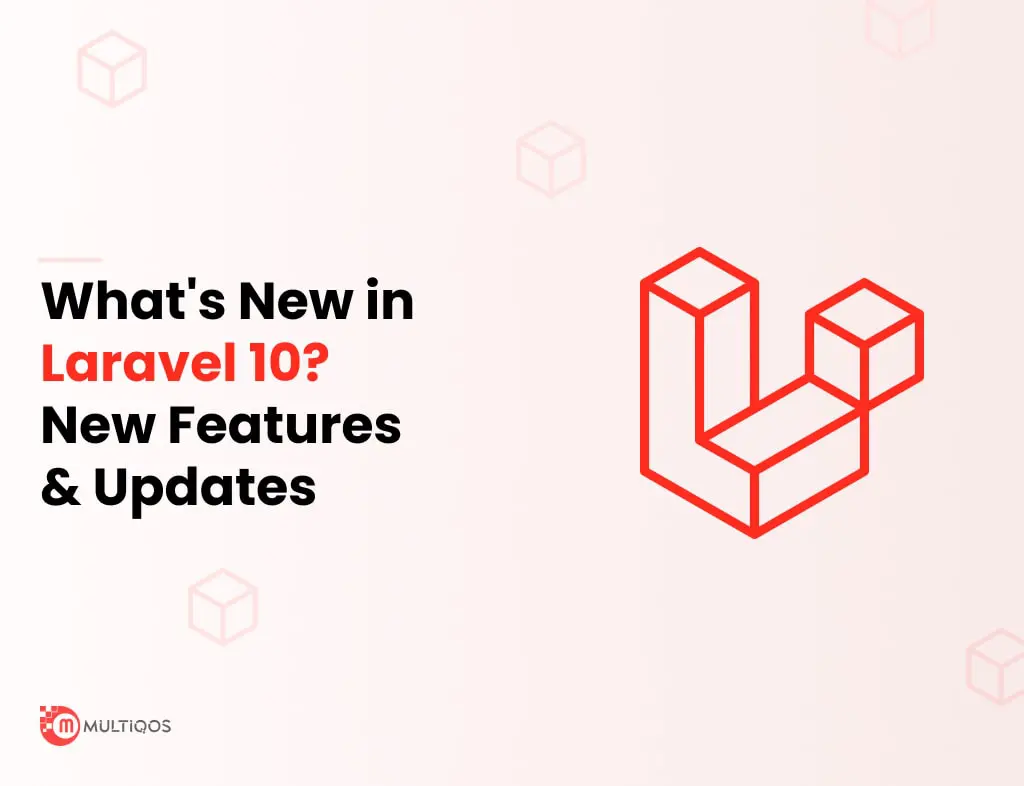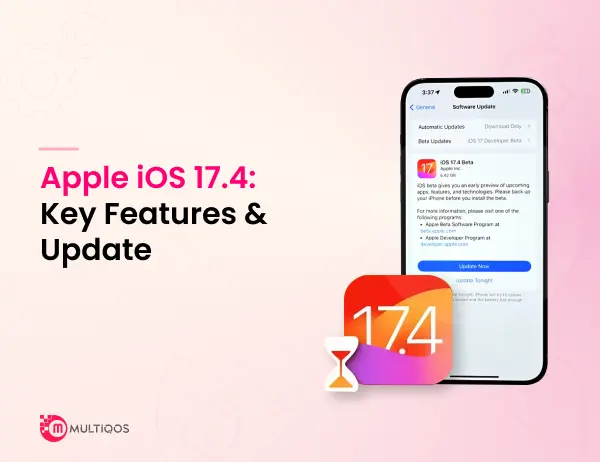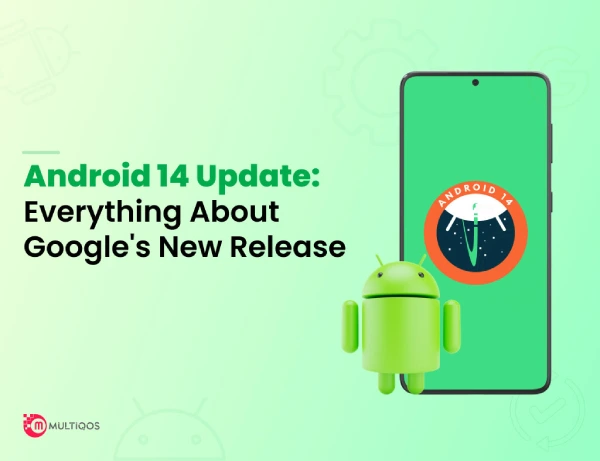Laravel 10 Update: A Deep Dive Into New Features and Changes

Overview
While the market is continuously expanding in all spheres for improved services and upgrades, the core team at Laravel is committed to going above and beyond to serve their best. The Laravel 10 update, the most recent investment in their brand, has been enhanced to offer sublime service to business owners. So, in order to encourage developers and company owners to update their current Laravel apps, we are here to tell you about What’s New in Laravel 10, as well as the newest features and changes.
But before you start with the features of this new update to hire Laravel developers, let us first go through a brief overview of the Laravel v10 App.
What Is a Laravel v10 App All About?
The most recent version of Laravel (Laravel 10), which was published on February 7th, 2023, has a number of new features that improve the functionality, security, and speed of web apps.
Each version of Laravel prior to Laravel 9 was published every six months. However, with the introduction of Laravel 9, the creators have chosen to yearly release a new version. Just so you know, Laravel 9 was made available on February 8th, 2022. They finally made the decision to release Laravel 10 precisely one year later.
Users and developers from trusted Laravel Development Company have high expectations for Laravel 10, the most recent version because earlier iterations of the framework set a standard among developers. Hence, Laravel 10 has a lot to offer whether you are an expert or a novice Laravel developer.
The Most Recent Laravel Version Cycle Updates!
The Laravel core team used to release two significant versions once every six months.
The release cycle was changed, though, when Laravel’s creator Taylor Otwell declared that just one mainstream variation would be released this year. As a result, the core group and community were able to focus more time and energy on a particular version of the technology and add new features without dividing the framework.
On February 7, 2023, the Laravel core group launched the most recent version of the framework amid considerable fanfare. The community is, thus, eagerly awaiting the introduction of a number of ground-breaking Laravel additions and enhancements for the framework with the release of Laravel v10.
What Features Does Laravel v10 Come With?
-
Introduction of Laravel Pennant
The Laravel Pennant is an easy-to-use and compact feature flag package that makes adding new features to your application simple. It supports trunk-based development techniques, has an A/B test interface design, and more. The feature flags enable at-runtime features on/off without modifying the code.
-
Simple Process Management
You can quickly execute external processes in your Laravel application with the clear and comprehensive Symphony Process API that Laravel provides. With this process functionality, frequent use cases are addressed, greatly enhancing the development experience.
-
Does not Support PHP 8.0
The future release of Laravel does not support PHP version 8.0. Instead, PHP 8.1 is now the bare minimum required for Laravel 10. As a result, you may anticipate using PHP 8.1 features like read-only properties in the Laravel framework.
-
Native-Type Declarations in the Skeleton
With Laravel 10, the Application Skeleton Code will feature Native type declarations. It indicates that type-hints and return types will be present in all userland code produced by the framework. The new kinds will provide further benefits for the development of new projects.
In order to deliver the most recent PHP type-hinting features to Laravel applications while maintaining backward compatibility, the types are intelligently integrated into the framework. Among the characteristics are:
- Return formats
- Userland types are allowed in closure arguments
- Redundant annotations are deleted if possible
- Typed properties are not included
-
Predis Version 1 Is Not Supported Anymore
Predis is a powerful Redis client for PHP that may help you maximize caching to provide users a wonderful experience. Versions 1 and 2 of Predis were previously supported by Laravel, however, as of Laravel 10, the framework no longer supports Predis 1.
You may use the official PHP extension in addition to Predis, which is listed in the Laravel documentation as the package for communicating with Redis. An API is provided by this extension for interacting with Redis servers. According to laravel web development services, the speed of this add-on will increase the speed of your website when traffic is at its peak.
-
dispatchNow() Function has been Dropped
A well-liked method in Laravel is dispatchNow (). This function was removed in Laravel 10 after being deprecated in Laravel 9 in favor of dispatchSync(). As a result, you should now take it out of every project.
How to Install Laravel v10?
The following components must be present on your system in order to install Laravel 10.
- PHP >= 7.3.0
- Composer
Installing Laravel 10 is really simple. To install Laravel 10 in your system, you must adhere to a few procedures. The main branch of the laravel/laravel repository is installed using the –dev parameter included in the Laravel installer.
Let us quickly go through the Composer command to make it easier to comprehend:
- laravel/laravel: The package for the Laravel installation
- example-multiqos-app: The new directory for your new project (can be changed)
- dev-master: The next version of Laravel (in this case, Laravel 10)
laravel new example-multiqos-app –dev
In case you choose to explicitly use the Composer feature:
composer create-project –prefer-dist laravel/laravel example-multiqos-app dev-master
Bingo! The most recent Laravel 10 installation has been completed. Once you have finished installing Laravel 10, you can verify that it is version 10 by using the artisan command and going to the new directory example-multiqos-app:
- $ php artisan –version
- Laravel Framework 10.x-dev
Final Thoughts
In conclusion, Laravel V10 includes a variety of the newest upgrades and features designed to enhance the developer experience and the framework’s performance.
The addition of fresh and improved functionality elevates Laravel V10 to the status of an all-inclusive tool for contemporary web development. The improvements in this version are a result of the Laravel community’s ongoing efforts to improve the developer experience and stay on the cutting edge of web development.
Thus, if you want to use this latest version, you can hire laravel development company like MultiQoS. Your needs will be met to the best of our team’s abilities.
Want to Build Your Dream Application with Laravel?
Our team is eager to provide your business with an on-demand solution.
FAQs on Laravel Version 10 Updates & Features
Yes, Laravel has a bright future as it is one of the most popular PHP frameworks with a large community of developers and a constantly evolving ecosystem.
Yes, Laravel 10 is a secure version of the framework with numerous security features, such as query binding, CSRF protection, and password hashing. However, it’s important to follow best security practices and keep the framework and its dependencies up-to-date.
Laravel is powerful because it provides an expressive syntax, modular structure, and a wide range of features such as routing, middleware, and authentication. It also has a large community and an active development team that constantly improves the framework.
It’s not fair to compare Laravel and Python as they are two different things. Python is a general-purpose programming language, whereas Laravel is a PHP framework. Both have their own strengths and weaknesses, and choosing one over the other depends on the project’s requirements.
Laravel and Angular are two different things as well. Laravel is a backend PHP framework, while Angular is a frontend JavaScript framework. Both can be used together to create a powerful web application, but it’s not a matter of which one is better than the other.
Laravel and Node.js are also different technologies, with Laravel being a PHP framework and Node.js being a JavaScript runtime. Both have their own use cases and strengths, and the choice between them depends on the specific requirements of a project.
Yes, Laravel is still in high demand as it is one of the most popular PHP frameworks, with a large and active community, a wide range of features, and a constantly evolving ecosystem. Many companies use Laravel for their web development projects, which creates a high demand for Laravel developers.
Laravel 10 includes several new features and improvements, such as faster request handling, improved routing, better support for Blade components, and enhanced query builder macros. For a full list of changes, refer to the official Laravel documentation.
Yes, you can upgrade to Laravel 10 from any previous version of the framework. However, it’s important to follow the upgrade guide provided by Laravel to ensure a smooth transition and avoid any potential compatibility issues.
Laravel 10 is mostly backwards-compatible with earlier versions of the framework, but some changes may require adjustments to existing code. It’s recommended to thoroughly test your application after upgrading to ensure that everything is working as expected.
Laravel 10 has the same system requirements as earlier versions of the framework, which include PHP 7.3 or higher, OpenSSL extension, PDO extension, Mbstring extension, and JSON extension. It’s also recommended to use a database such as MySQL or PostgreSQL.
Whether or not Laravel 10 is better than earlier versions depends on your specific needs and preferences. However, it does include several new features and improvements that can make development easier and more efficient. It’s recommended to review the changes and decide if they would benefit your project before upgrading.
Get In Touch




